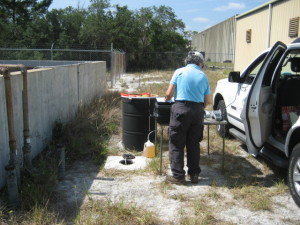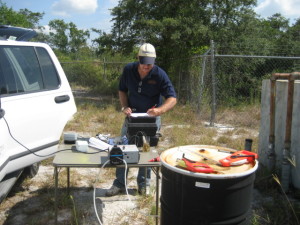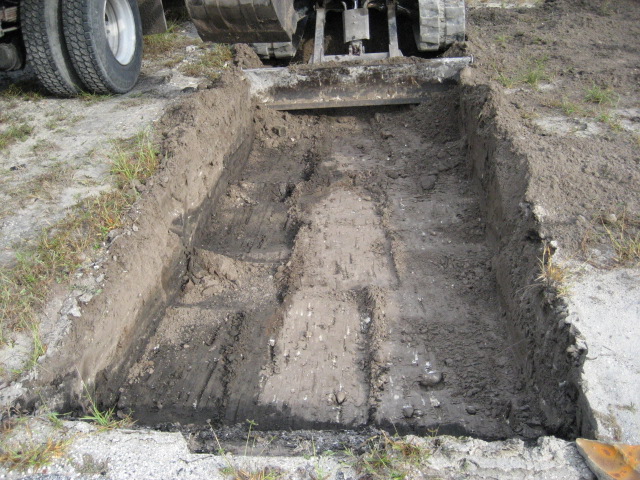
 A former tenant at this site recycled and extracted trace metals from automotive catalytic converters. Various acids and alkylines were used in the metal digestion process. As the result of an inspection by the Florida Department of Environmental Protection, a site assessment was conducted. The result of the assessment revealed elevated concentrations of several metals, including arsenic, aluminum, and iron. Natural attenuation is currently ongoing on a quarterly basis at three monitoring well locations.
A former tenant at this site recycled and extracted trace metals from automotive catalytic converters. Various acids and alkylines were used in the metal digestion process. As the result of an inspection by the Florida Department of Environmental Protection, a site assessment was conducted. The result of the assessment revealed elevated concentrations of several metals, including arsenic, aluminum, and iron. Natural attenuation is currently ongoing on a quarterly basis at three monitoring well locations.
Environmental Projects
Site Assessment and Remediation, The Strand, Clearwater, Florida
Hydro-Environmental Associates, Inc. conducted a soil and groundwater site assessment and soil remediation of a proposed office and residential complex, located within downtown Clearwater, Florida. The site was a former automotive sales and repair facility. Elevated arsenic concentrations were identified from a specific soil layer underneath a concrete slab that was used for automotive repair and detailing. The horizontal and vertical extent of soil contamination was identified through the results of a series of discreet samples collected from within, around, and below the contamination zone. The contamination zone was carefully defined and delineated during remediation. The contaminated soil was identified as dark-gray fine sand that was used as a fill material underneath the concrete slab. The results of groundwater sampling did not identify leaching of the arsenic into the surficial aquifer underneath the slab.
 The contaminated soil was excavated from the site, temporarily stockpiled awaiting transport, and then transported to a soil recycling facility in Mulberry, Florida for proper disposal.
The contaminated soil was excavated from the site, temporarily stockpiled awaiting transport, and then transported to a soil recycling facility in Mulberry, Florida for proper disposal.
Assessment and Remediation of the Former Stone Buick Facility, Clearwater, Florida
Hydro-Environmental Associates, Inc. (HEA) conducted a soil and groundwater site assessment and site remediation of the former Stone Buick automotive sales and service facility, located within downtown Clearwater, Florida. HEA initially conducted a Phase I and II Environmental Site Assessment (ESA) which identified the existence of numerous in-ground hydraulic lifts, an oil-water separator, a grease trap, and a septic system. The Phase II ESA included soil and groundwater sampling at each of the hydraulic lift areas, as well as within the oil-water separator, grease trap, and septic tank and leachfield.
The results of groundwater sampling did not detect waste oil group parameters at any of the sample locations above the applicable groundwater cleanup target levels (GCTL)s. However soil contamination was detected in the vicinity of several of the hydraulic lift areas, oil-water separator, and grease trap.
HEA oversaw site remediation activities to remove the 11 in-ground hydraulic lifts, associated hydraulic oil and reservoirs; the oil-water separator; grease trap; septic system; and sand filter bed. Soil screening was conducted by HEA during the site remediation to define and delineate the extent of excessively contaminated soil. Approximately 35 cubic yards of excessively contaminated soil was removed, transported, and thermally incinerated.
Confirmatory soil and groundwater samples were collected at strategic locations upon completion of the site remediation. The results of the confirmatory sampling indicated that the contaminated soil had been successfully remediated, and the results of groundwater sampling indicated that concentrations of waste oil parameters were within the applicable GCTLs.


